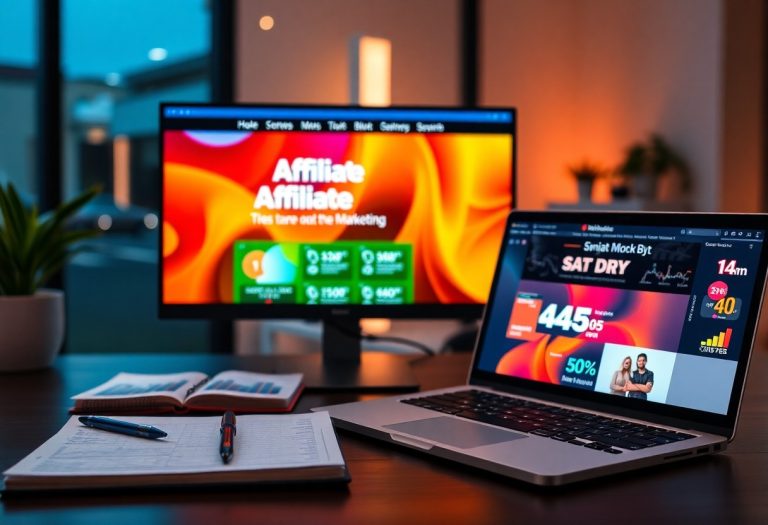Designing for Accessibility – Ensuring Your Website is Inclusive to All Users
Design with inclusion in mind by ensuring your website is accessible to all users, regardless of their abilities. Implementing accessible design practices not only broadens your audience but also provides a better user experience. You can enhance usability for individuals with disabilities by following established guidelines and techniques. This post will guide you through key principles and actionable steps to create a more inclusive online environment that enhances engagement and satisfaction for every visitor.
Understanding Accessibility
Accessibility in web design ensures that all users, regardless of their disabilities, can access and benefit from digital content. Effective design removes barriers, allowing individuals with visual, auditory, motor, or cognitive impairments to utilize your website seamlessly. Adopting accessibility practices aligns with both ethical responsibilities and legal requirements, fostering inclusivity for a diverse audience.
Definition of Web Accessibility
Web accessibility refers to the inclusive practice of designing websites that can be used by everyone, including people with disabilities. This encompasses various elements, such as text alternatives for images, keyboard navigability, and readable layouts, all aimed at providing an equivalent experience for all users, regardless of their individual needs.
Importance of Accessibility in Design
Integrating accessibility into design not only broadens your audience but also enhances user experience for everyone. Statistics show that approximately 1 in 4 people have a disability, highlighting the critical need for accessible content. By prioritizing accessibility, you improve usability, increase search engine optimization (SEO), and often see higher conversion rates. Websites that embrace these principles reflect a commitment to social responsibility and can enhance brand loyalty.
Accessible design leads to a more engaging user experience, as features that assist those with disabilities often benefit all users. For instance, captions on videos provide context for viewers in noisy environments, while clear navigational structures help everyone find information more efficiently. Brands that integrate accessibility into their design strategy can reach an estimated 286 million users in the global population with visual impairments alone, thereby unlocking significant market potential. This inclusivity not only drives traffic but also cultivates a positive brand image in an increasingly socially aware marketplace.
Common Accessibility Barriers
Accessibility barriers can impede users from fully engaging with your website. These barriers stem from various challenges individuals face, including visual impairments, motor disabilities, and cognitive challenges. Understanding these obstacles allows you to create more inclusive digital experiences, ensuring that everyone has equal access to your content and services.
Visual Impairments
Visual impairments range from complete blindness to varying degrees of low vision, affecting how users perceive screen content. Inadequate color contrast, poor text readability, and reliance on visual cues can render your site inaccessible. Providing text alternatives for images and ensuring proper headings can greatly enhance usability for those who navigate through screen readers.
Motor Disabilities
Motor disabilities encompass conditions that affect coordination, dexterity, or mobility. Users may struggle with precise mouse movements or keyboard shortcuts. Designing with larger clickable areas, eliminating time constraints, and allowing alternative input methods can significantly improve navigation for these users. Customizable interfaces and adjustable settings further enhance accessibility for individuals facing motor challenges.
Individuals with motor disabilities often rely on assistive technologies like voice recognition software or adaptive hardware. Interfaces that require minimal clicks, such as single-page designs or well-structured menus, can significantly reduce frustration. Additionally, incorporating options to adjust the navigation speed or bypass time-sensitive tasks enhances the overall user experience. Streamlining interactions can empower users with motor challenges to navigate your website efficiently and independently, ensuring they can access vital information without hindrance.
Designing for Various Disabilities
Each user’s experience may be affected by disabilities that vary in type and severity. Designing with these differences in mind creates a more inclusive environment. This involves implementing practices that cater to the needs of those with visual, auditory, motor, and cognitive challenges. By addressing these disabilities upfront, you enhance not just usability but the overall experience for all users.
Strategies for Visual Accessibility
Focus on high contrast color combinations to improve readability for users with low vision. Utilize alt text for images so visually impaired users can comprehend content via screen readers. Provide options for customizable text size, allowing users to adjust the display to their preferences. Clean layouts with ample whitespace further aid users in navigating your site without visual clutter.
Enhancing Usability for Motor Impairments
Design elements should permit seamless navigation for users with motor impairments. Implement larger clickable areas, allowing easier interaction with buttons and links. Ensure that keyboard navigation is smooth and intuitive, minimizing reliance on a mouse. Offering options for voice commands further accommodates their needs.
Consider integrating features like sticky menus and shortcut keys, which can significantly ease navigation challenges. Allow users to customize their input methods, enabling them to use devices like adaptive keyboards or switches. Incorporate drag-and-drop functionality for users who may struggle with precise clicking, thus reducing frustration. Overall, these enhancements not only benefit users with motor impairments but also improve overall user satisfaction across your site.
Tools and Resources for Testing Accessibility
Utilizing appropriate tools and resources for testing accessibility can significantly enhance your website’s inclusivity. Many platforms offer a variety of automated and manual testing methods, enabling you to identify barriers experienced by users with disabilities. Implementing these tools is a proactive step toward ensuring your site’s compliance with accessibility standards and enhancing user experience for everyone.
Automated Testing Tools
Automated testing tools streamline the process of checking your website for accessibility issues. Tools such as Axe, WAVE, and Lighthouse can scan your site for common problems, providing immediate feedback on elements like color contrast, missing alt text, and heading structure. While useful for catching visible issues quickly, they should be complemented by manual testing to address more nuanced accessibility challenges.
User Testing with Diverse Audiences
User testing with diverse audiences provides invaluable insights into your website’s accessibility. Engaging users with varying disabilities allows you to observe their interactions, identify pain points, and gather qualitative feedback. This firsthand knowledge is crucial for making informed adjustments and ensuring your website meets the needs of all users.
In conducting user testing, aim to include participants with different disabilities, such as visual impairments, hearing loss, and cognitive disabilities. Structuring your sessions around real tasks, like navigating through your site or completing a purchase, offers practical insights into users’ experiences. Gather feedback on various components, such as navigation ease and content clarity. Consider leveraging platforms like UserTesting or recruiting participants through local accessibility organizations to ensure a varied audience. This approach not only uncovers specific accessibility barriers but also empowers you to create a more inclusive digital environment.
Best Practices for Inclusive Web Design
Implementing best practices for inclusive web design ensures that all users can navigate and interact with your website seamlessly. This involves applying specific techniques that enhance usability for people with disabilities while also improving overall user experience. By focusing on effective design elements, you create a more welcoming online environment that acknowledges diversity and promotes accessibility in a meaningful way.
Semantic HTML and ARIA Roles
Utilizing semantic HTML is fundamental for building accessible websites. This means using appropriate HTML elements that convey meaning, such as headings, lists, and navigation tags. Combined with ARIA (Accessible Rich Internet Applications) roles, you empower screen readers to better interpret complex user interfaces. Correct use of these elements allows you to communicate the purpose of your content effectively, providing a clear structure that all users can understand.
Designing for Keyboard Navigation
Designing with keyboard navigation in mind enables users who rely on keyboards to navigate your site effortlessly. By ensuring every interactive element can be accessed via keyboard strokes, you create a more inclusive experience. Features like skip links, logical tab order, and visible focus states are crucial in guiding users through your content without relying on a mouse.
To enhance keyboard navigation, implement features such as focus indicators that clearly highlight the active element as users tab through your site. Limit the use of complex key combinations, preferring straightforward navigational shortcuts, which can significantly improve usability. Test your site by navigating with only the keyboard; this practice reveals potential pain points. A well-structured layout that adheres to these principles fosters independence among users with mobility impairments, ultimately broadening your audience and improving site engagement.
Legal Considerations and Standards
Compliance with accessibility laws is imperative for creating inclusive websites. Laws such as the Americans with Disabilities Act (ADA) and Section 508 require that online spaces be accessible to individuals with disabilities. Failure to adhere to these regulations can result in legal action and financial repercussions, making it imperative for businesses and organizations to prioritize accessibility in their design processes.
Overview of Accessibility Laws
Accessibility laws vary by region but generally mandate inclusion for individuals with disabilities. In the United States, the ADA applies to public accommodations and has been interpreted to include websites. Certain states and municipalities have passed laws that complement federal standards, often setting more stringent requirements. Familiarizing yourself with these regulations ensures your website meets legal expectations and embraces inclusivity.
WCAG Guidelines
The Web Content Accessibility Guidelines (WCAG) provide a comprehensive framework for designing accessible online content. Developed by the World Wide Web Consortium (W3C), these guidelines focus on four principles: perceivable, operable, understandable, and robust. Adhering to WCAG ensures that your website is usable for individuals with a range of disabilities, thereby enhancing the user experience for everyone.
WCAG consists of three levels of conformance: A, AA, and AAA, each with increasing accessibility criteria. Level AA is the most commonly adopted standard, emphasizing text readability, navigational elements, color contrast, and multimedia accessibility. For instance, ensuring text can be resized without losing content or functionality directly translates to better accessibility. Implementing these guidelines not only mitigates legal risks but also broadens your audience reach by catering to diverse user needs, ultimately reinforcing your commitment to inclusion.
Final Words
The process of designing for accessibility is an ongoing commitment that enhances your website’s usability for all users. By integrating accessible design principles, you ensure that everyone, regardless of ability, can navigate and interact with your content effectively. Implementing these practices not only meets legal requirements but also broadens your audience and improves overall user satisfaction. Embracing inclusivity in your web design is key to fostering a positive online experience for every visitor to your site.






